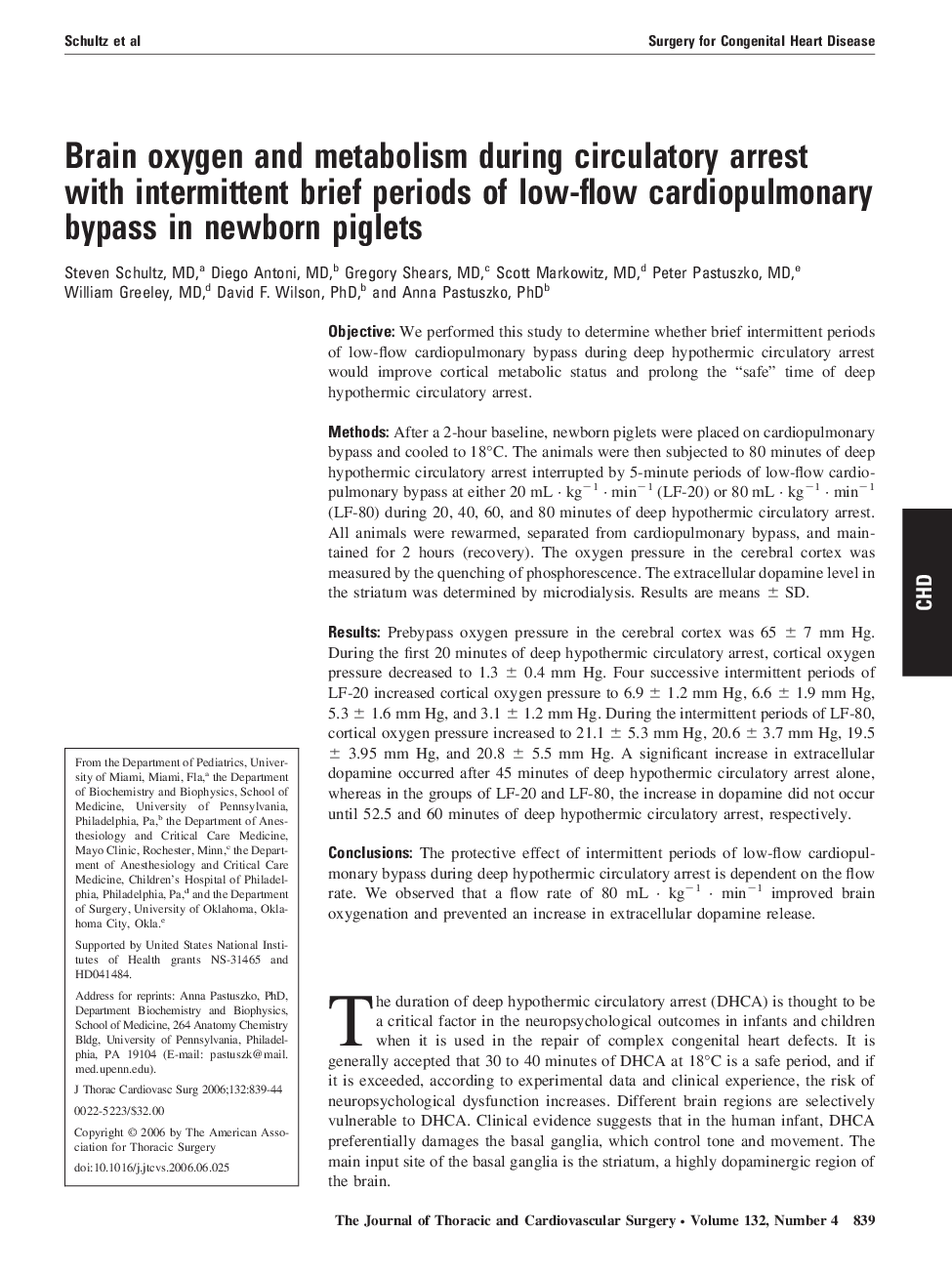| کد مقاله | کد نشریه | سال انتشار | مقاله انگلیسی | نسخه تمام متن |
|---|---|---|---|---|
| 2984782 | 1578705 | 2006 | 6 صفحه PDF | دانلود رایگان |

ObjectiveWe performed this study to determine whether brief intermittent periods of low-flow cardiopulmonary bypass during deep hypothermic circulatory arrest would improve cortical metabolic status and prolong the “safe” time of deep hypothermic circulatory arrest.MethodsAfter a 2-hour baseline, newborn piglets were placed on cardiopulmonary bypass and cooled to 18°C. The animals were then subjected to 80 minutes of deep hypothermic circulatory arrest interrupted by 5-minute periods of low-flow cardiopulmonary bypass at either 20 mL · kg−1 · min−1 (LF-20) or 80 mL · kg−1 · min−1 (LF-80) during 20, 40, 60, and 80 minutes of deep hypothermic circulatory arrest. All animals were rewarmed, separated from cardiopulmonary bypass, and maintained for 2 hours (recovery). The oxygen pressure in the cerebral cortex was measured by the quenching of phosphorescence. The extracellular dopamine level in the striatum was determined by microdialysis. Results are means ± SD.ResultsPrebypass oxygen pressure in the cerebral cortex was 65 ± 7 mm Hg. During the first 20 minutes of deep hypothermic circulatory arrest, cortical oxygen pressure decreased to 1.3 ± 0.4 mm Hg. Four successive intermittent periods of LF-20 increased cortical oxygen pressure to 6.9 ± 1.2 mm Hg, 6.6 ± 1.9 mm Hg, 5.3 ± 1.6 mm Hg, and 3.1 ± 1.2 mm Hg. During the intermittent periods of LF-80, cortical oxygen pressure increased to 21.1 ± 5.3 mm Hg, 20.6 ± 3.7 mm Hg, 19.5 ± 3.95 mm Hg, and 20.8 ± 5.5 mm Hg. A significant increase in extracellular dopamine occurred after 45 minutes of deep hypothermic circulatory arrest alone, whereas in the groups of LF-20 and LF-80, the increase in dopamine did not occur until 52.5 and 60 minutes of deep hypothermic circulatory arrest, respectively.ConclusionsThe protective effect of intermittent periods of low-flow cardiopulmonary bypass during deep hypothermic circulatory arrest is dependent on the flow rate. We observed that a flow rate of 80 mL · kg−1 · min−1 improved brain oxygenation and prevented an increase in extracellular dopamine release.
Journal: The Journal of Thoracic and Cardiovascular Surgery - Volume 132, Issue 4, October 2006, Pages 839–844